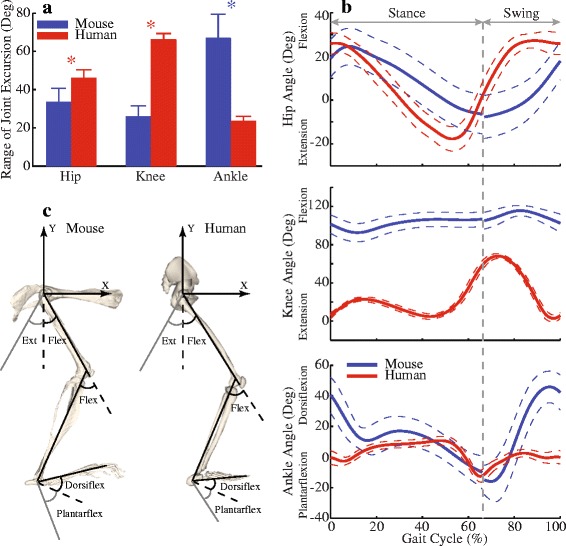Fig. 5.

Comparison of the joint angles during one gait cycle between mice and humans. (a) Comparison of ranges of joint excursions (mean and standard deviation) at the hip, knee, and ankle joints between mice and humans. Blue stars indicate mice have larger ranges, while red stars indicate humans have larger ranges (p < 0.05). (b) Average of joint angles during one gait cycle (solid curves), from heel strike to heel strike. Dashed curves indicate ± standard deviation. Original gait data for mice started with toe-off. To be consistent with general gait data representation, the swing phase data from mice were manually moved to be after the stance phase. Vertical dashed line indicates toe-off at about 65% of a gait cycle for mice and humans. (c) Definition of the flexions and extensions at the hip, knee, and ankle joints. The flexion of the hip joint was defined relative to the coordinates of the pelvis (shown). Flex flexion, Ext extension, Dorsiflex dorsiflexion, Plantarflex plantarflexion
